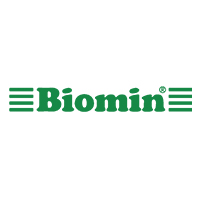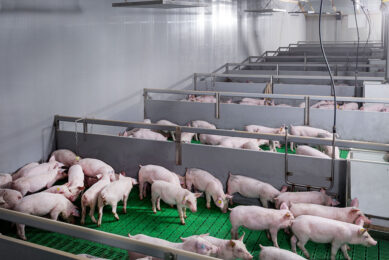The hidden dangers of lipopolysaccharides

Lipopolysaccharides, or endotoxins, are cell wall components of Gram-negative bacteria that often pose a serious and often overlooked risk to pigs. Several tips can help limit their negative impacts.
Lipopolysaccharides (LPS), also called endotoxins because they are released upon bacterial replication or death (lysis), are present everywhere in the environment including in the ground, air and water. Pigs are continuously exposed to lipopolysaccharides throughout their lives. In healthy animals, the intestinal and other epitheliums such as skin or lungs, represent an effective barrier that prevents the passage of lipopolysaccharides into the bloodstream. Once there, however, endotoxins can elicit strong immune responses, weakening immune systems and impairing performance. Severely pronounced immune response can lead to septic shock.
In swine, endotoxins are known to cause dose-dependent increases in body temperature of 1°C to 1.5°C, reduced levels of activity/movement, lower feed intake, and severe anorexia. More frequent vomiting, salivation and chewing have also been reported.
Figure 1 illustrates the structure of a lipopolysaccharide containing a pyrogenic lipid part embedded in the bacterial wall, an inner and outer core oligosaccharide, and an O antigen double polysaccharide chain.
Figure 1 – Diagram of a lipopolysaccharide
Lipopolysaccharides vary according to originating bacteria, being more or less aggressive or pathogenic according to variability happening in the O-specific polysaccharide chain. They also serve as a potential barrier to antimicrobials from entering the outer membrane of Gram-negative bacteria.
Negative effects
In the body, endotoxins cause an inflammatory cascade that increase a pig’s maintenance requirements (due to fever) that, coupled with reduced feed intake, means less energy is available for growth. One research study found that LPS-challenged piglets had a 13% lower average daily gain (Table 1) compared to the control group.
Endotoxins also impair feed efficiency. A recent study of common challenges in pig farms reported a reduction in feed intake of 3% due to parasitic infections, 4.1% due to poor housing conditions, 10.2% due to digestive bacterial infections, 17.3% because of respiratory diseases, 25.2% due to mycotoxicoses (mycotoxin-induced diseases) and 26.8% due to lipopolysaccharides.
Environment and endotoxin exposure
While the main route for lipopolysaccharide exposure in swine is the gastro-intestinal tract, the concentration of endotoxins in the air and dust should not be overlooked: endotoxins are a major component of biological dust.
Air endotoxin levels are an important issue not only for the animals, but also for workers. A survey of pig production facilities has registered airborne lipopolysaccharide concentrations from 40.4 to 1144 ng/m3 of air (Table 2).
This reinforces the importance of good management regarding hygiene and dust levels on farms, and specific measures to protect workers such as wearing a fine dust mask.
Aggravation of endotoxin exposure
In recent years, new concerns have emerged about nutritional, environmental, and social factors that may disrupt the barrier function and/or increase exposure to lipopolysaccharides. Such exposure may result in clinical or sub-clinical signs that ultimately affect production. Septic shock is very often related to infection by pathogenic Gram-negative bacteria that produce lipopolysaccharides.
The gut is the first line of defence against endotoxins and, if compromised via nutrition, stress or metabolic state, endotoxin transport can increase, e.g. heat stress, mycotoxins, inflammation, etc. In several livestock species, it is well established that a 1 to 2°C increase in body temperature causes the intestinal tight junction proteins to be affected, increasing intestinal permeability and allowing more lipopolysaccharides to enter the blood stream. High caloric and high fat diets increase serum endotoxin concentrations and induce acute low grade inflammation. Starvation depresses the expression and function of intestinal alkaline phosphatase, or IAP, a brush–border enzyme that detoxifies lipopolysaccharides.
Mycotoxin magnifiers
Lipopolysaccharides are able to increase a pig’s sensitivity to deoxynivalenol (DON), a major mycotoxin that can cause feed refusal, vomiting, diarrhoea, splay legs and weakened immune function. According to the latest Biomin Mycotoxin Survey that analysed 6,844 agricultural commodity samples from 64 countries, DON poses the most frequent threat to livestock with a prevalence of 66% and average contamination level of 1,394 parts per billion. A full 82% of those samples exceed risk thresholds for livestock. A synergistic effect was recently found between DON and lipopolysaccharides in induction of pro-inflammatory cytokines TNF-α and IL-1β in porcine alveolar macrophages. Endotoxins reduced the minimum dose of DON needed to induce cytokine response, increased its toxic effects, increased organisms’ sensitivity to the toxin and magnified the effects of even low concentrations of DON.
Coping with endotoxins
Mammals have developed an elaborate system to tolerate and detoxify lipopolysaccharides either at the mucosal surface or in systemic circulation. Bile plays an important role in detoxification because of the detergent action of bile salts in the intestine. Intestinal chylomicrons, which are involved in transporting the absorbed fatty acids, have been shown to promote the absorption of endotoxins and to help the conjugation of lipopolysaccharides to bile salts.
Treatment
Biosecurity and hygiene can greatly help decrease the lipopolysaccharide challenge in farm animals, together with the awareness that a certain amount of endotoxins is always present. Some healthy behaviours can greatly help to reduce the risk of endotoxin challenge on the farm.
- Avoid the introduction of pathogens through robust biosecurity;
- Limit stressors linked to leaky gut, and conditioned diseases such as Pasteurella, Haemophilus, E. coli, Salmonella, Brachyspira, Lawsonia, etc.;
- Provide proper nutrition, balancing appropriate protein and energy (fats);
- Avoid fasting after weaning; and
- Avoid mycotoxin contamination
In addition, the use of a select feed additive that offers endotoxin protection can help mitigate the risks of a lipopolysaccharide challenge. Mycofix is a multi- strategy mycotoxin deactivating feed additive that uses adsorption as a mode of action to effectively bind and prevent endotoxins from entering the bloodstream, mitigating the risk to animals.
Figure 3 shows that even at low doses, the additive is able to efficiently adsorb or bind a considerable percentage of endotoxin in the gut lumen, greatly decreasing its passage into the bloodstream. Other research has demonstrated this mode of action to be effective even in the presence of adsorbable mycotoxins such as aflatoxins.
Dangers are well-documented
The dangers posed by lipopolysaccharides, or endotoxins, are well-documented though often overlooked. Fever, reduced food intake, impaired immune function and lower growth all affect animal health and performance. While endotoxins’ presence in air, ground and water mean that they cannot be eliminated completely,a number of actions can help mitigate their impacts.
By Diego Padoan DVM, Biomin swine technical sales manager EMA
 Beheer
Beheer









 WP Admin
WP Admin  Bewerk bericht
Bewerk bericht